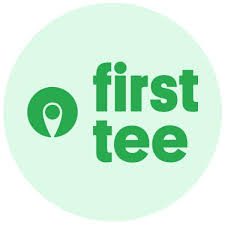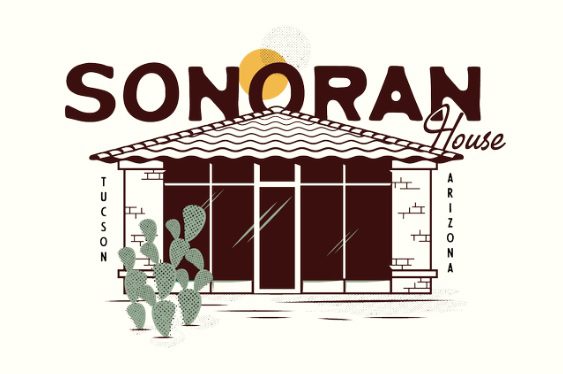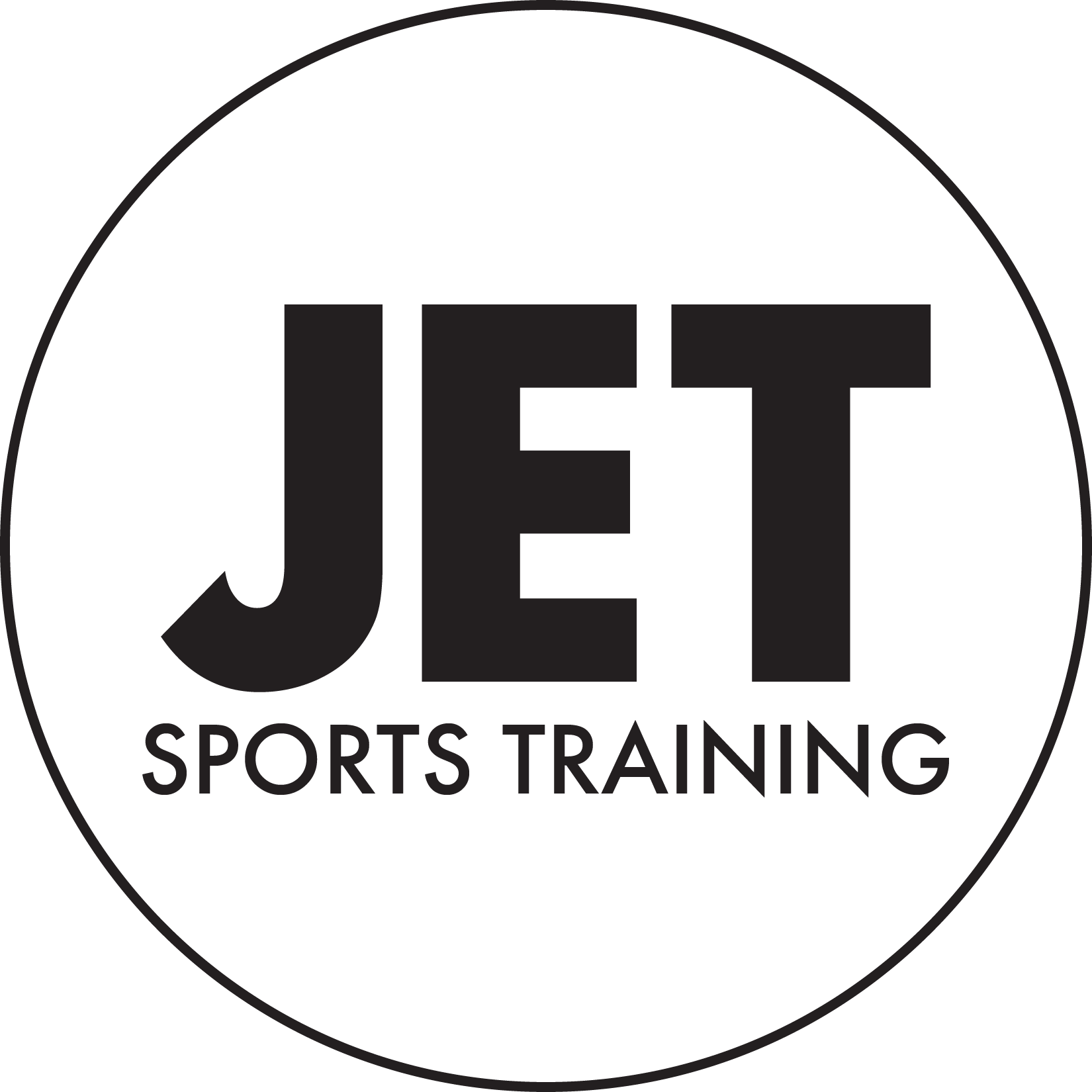Rec Sports
Baja Arizona Notes: Miia Campos, Monica Ortiz, Bart Peterson, Paul Reed and Matt Sierras
Share Tweet Share Share Email Longtime youth baseball coach Matt Sierras with a few of his former players. (Sierras Family Photo) Former Canyon del Oro standout Miia Campos collected an RBI double to help UT Tyler beat Tampa 3-0 in the second game of the […]

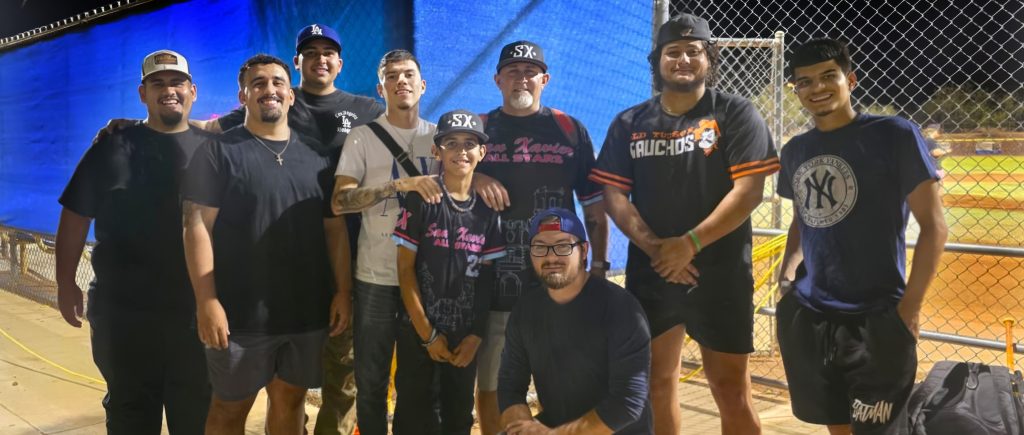
Former Canyon del Oro standout Miia Campos collected an RBI double to help UT Tyler beat Tampa 3-0 in the second game of the NCAA Division II Softball World Series to go along with a two-run RBI double in a 6-0 win over Tampa in the first game of the series.
Campos helped the Patriots win back-to-back national championships for the first time in D-II history dating back to 1997-1998. Campos was a CSC Academic All-American.
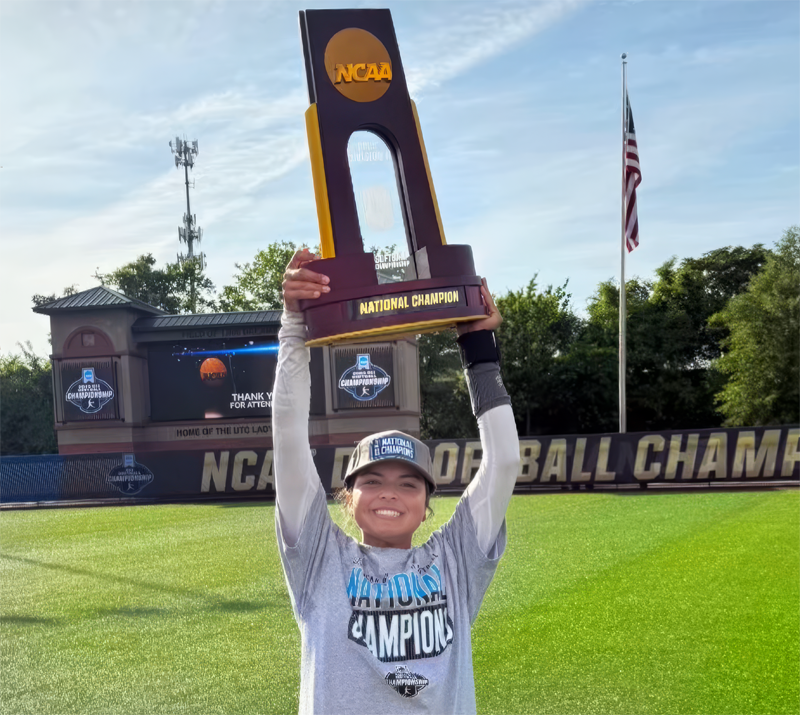
Amphitheater High athletic trainer Monica Ortiz earned the District 7 and National Secondary Schools Athletic Trainer of the Year awards this past week at the NATA Secondary School Athletic Trainer convention held in Florida. In May, Ortiz won a $1,000 grant from the WhataTeacher Program and she provided over 5,000 sandwiches and snacks for athletes to eat on game days. The grant was renewed for $5,000.
In addition, longtime trainer Bart Peterson was awarded the District 7 Servant’s Heart Award. Peterson served as the Palo Verde trainer from 2000 until this summer and he is now located at Rincon/University High. He was also the AD at Palo Verde from 2010-2014.

Alabama A&M hired Paul Reed as the associate head women’s basketball coach this past week.
“We are thrilled to welcome Paul Reed as our associate head coach,” head coach Dawn Thornton said in a release. “Paul brings a wealth of experience and a proven track record of developing talent and building winning programs. His dedication to fostering strong relationships with players and his commitment to excellence on and off the court make him an invaluable addition to our team.”
Reed was the head coach of the girls’ varsity team at Tucson High (2005-11). In his six years at the helm, Reed led the Badgers to four state tournaments and three regional titles. He was named the Southern Arizona Coach of the Year in 2007, 2008 and 2009 and finished with a 129-63 overall record. He shifted over to two years at Cienega two years at Cienega and he compiled a 45-13 overall record and led the Bobcats to a pair of appearances in the state tournament. In 2014, Reed was named the Southern Arizona Coach of the Year for the fourth time in his career after guiding Cienega to a regional championship and a runner-up finish at the Arizona Girls’ State Basketball Division II playoffs. Cienega concluded the season at 26-2.
Reed was previously an assistant at Long Beach State, Washington, Cal and St. Mary’s.

Pima County Transportation Manager Matt Sierras has been a youth baseball coach since 2004 and Little League since 2006. He is currently managing the San Xavier Majors team at the District 12 playoffs where his squad will face Rincon Monday at 5:15 p.m. for a shot at the championship game from the winner’s bracket. According to his family, this will be his last year coaching and members from his teams from 13-15 years ago attended his 6-5 victory over Sunnyside Friday night.
Sierras has also been an assistant coach at Tucson High since 2012.

Rec Sports
US health officials crack down on kratom-related products
U.S. health officials are warning Americans about the risks of an opioid-related ingredient increasingly added to energy drinks, gummies and supplements sold at gas stations and convenience stores, recommending a nationwide ban. The chemical, known as 7- hydroxymitragynine, is a component of kratom, a plant native to Southeast Asia that has gained popularity in the […]
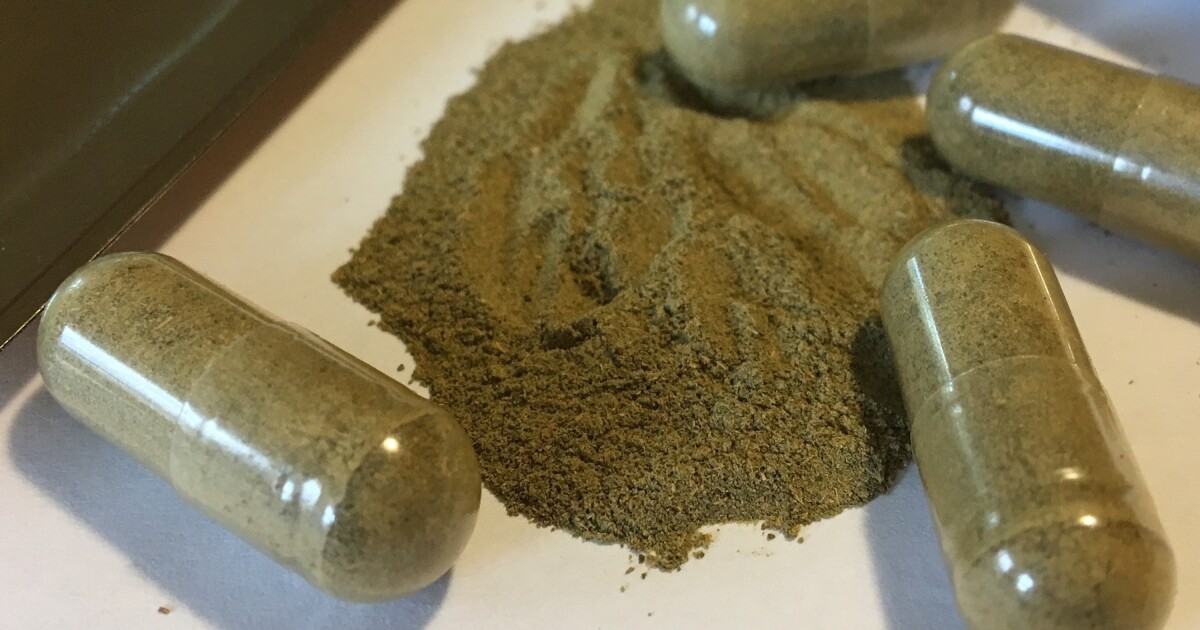
U.S. health officials are warning Americans about the risks of an opioid-related ingredient increasingly added to energy drinks, gummies and supplements sold at gas stations and convenience stores, recommending a nationwide ban.
The chemical, known as 7- hydroxymitragynine, is a component of kratom, a plant native to Southeast Asia that has gained popularity in the U.S. as an unapproved treatment for pain, anxiety and drug dependence.
In recent months, dietary supplement companies that sell kratom have been urging the Food and Drug Administration to crack down on the products containing 7-OH, portraying it as a dangerously concentrated, synthetic form of the original ingredient.
The FDA action “is not focused on natural kratom leaf products,” according to a statement Tuesday by the U.S. Department of Health and Human Services.
RELATED STORY | Experts warn of heat risks for youth sports participants
The agency said it was releasing a report to educate about the risks of “7-OH and its distinction from the kratom plant leaf.” Regulators are also recommending that the ingredient be placed on the federal government’s most restrictive list of illegal drugs, which includes LSD and heroin.
“7-OH is an opioid that can be more potent than morphine,” said FDA Commissioner Marty Makary. “We need regulation and public education to prevent another wave of the opioid epidemic.”
The agency’s recommendation will be reviewed by the Drug Enforcement Administration, which sets federal rules for high-risk drugs including prescription medicines and illicit substances. A national ban wouldn’t take effect until the agency drafts and finalizes new rules governing the ingredient.
Federal regulators have been scrutinizing kratom for about a decade after reports of addiction, injury and overdose. But users and distributors have long opposed efforts to regulate it, saying kratom could be a safer alternative to opioid painkillers that sparked the ongoing drug addiction epidemic.
Last month, the FDA issued warning letters to seven companies selling drinks, gummies and powders infused with 7-OH. Regulators said the products violated FDA rules because they have not been evaluated for safety and, in some cases, claimed to treat medical conditions, including pain, arthritis and anxiety.
Supplement executives quickly applauded the move.
The FDA “demonstrated the exact kind of data-driven, proactive regulatory excellence needed to safeguard unwitting consumers across the U.S.,” said Ryan Niddel of Diversified Botanics, a Utah-based company that sells kratom supplements.
An industry group, the American Kratom Association, has lobbied Congress for years against restrictions on the plant. Legislation supported by the group would prohibit the FDA from regulating kratom more strictly than food and dietary supplements.
In recent years, the association has lobbied at the state level for bills that limit synthetic 7-OH products.
On Tuesday, a rival group that supports the availability of 7-OH drugs criticized the government’s move, pointing to the influence of kratom suppliers.
“Big kratom trade groups have spent years blaming 7-OH for harms caused by their own unregulated products, because it threatens their market share,” the Holistic Alternative Recovery Trust stated in an emailed message.
Nearly a decade ago, the federal government came close to banning kratom.
In 2016, the DEA announced plans to add it to the government’s most restrictive schedule 1, reserved for drugs that have no medical use and a high potential for abuse. But the plan stalled after a flood of public complaints, including a letter signed by more than 60 members of Congress.
The FDA then began studying the ingredient, concluding in 2018 that kratom contains many of the same chemicals as opioids, the addictive class of drugs that includes painkillers like OxyContin as well as heroin and fentanyl.
Since then, FDA regulators have continued to issue warnings about cases of injury, addiction and death with kratom supplements, which are usually sold in capsules or powders.
In recent months, the FDA has also issued warnings on other unapproved drugs sold as supplements or energy drinks, including the antidepressant tianeptine. Sometimes referred to collectively as “gas station heroin,” the drugs have been restricted by several states, but they are not scheduled at the federal level.
Rec Sports
Corporate Money Has Ruined Youth Sports
The AAU, which stands for the Amateur Athletic Union, a US nonprofit organization that hosts a variety of different sports for youth athletes, has drawn attention largely for its influence over youth basketball. Many high-profile basketball players, including LeBron James and Luka Dončić, have taken issue with what they see as its harmful effect on […]

The AAU, which stands for the Amateur Athletic Union, a US nonprofit organization that hosts a variety of different sports for youth athletes, has drawn attention largely for its influence over youth basketball. Many high-profile basketball players, including LeBron James and Luka Dončić, have taken issue with what they see as its harmful effect on the modern game.
The draw of the AAU is that it provides a venue for the best players in the country to compete during the summer in front of a slew of college recruiters; any player angling for a D1 (the top division of college sports) scholarship must work through the AAU basketball system.
The culture of AAU is hypercompetitive: athletes from the age of seven travel the country and play in shoe brand–sponsored tournaments — a far remove from the (more affordable) culture of pickup basketball long associated with the sport.
Year-round participation in nationwide competition, brand-sponsored tournaments, invite-only camps, and professionalized personal training has replaced an earlier model of youth sport in which athletes played during the school seasons but enjoyed a long offseason during which they often played another sport for fun.
For the players, the AAU offers exposure, putting not-yet-teenaged kids in front of college coaches, agents, trainers, handlers, and shoe executives. These individuals make up the informal rent-seeking class, which makes money by restricting kid’s access to big-time amateur basketball.
Their primary objective is “relationship building” with future stars, or what sports documentarian Mike Nicoll has referred to as ”juice proximity.” The aim of these individuals is to identify young talent, build up that talent’s brand, and funnel them to a set of specific college programs associated with their particular brand sponsor.
It is perhaps unsurprising that American sports are dominated by the same brand of gatekeeping and rent-seeking capitalism common across the rest of American society. But the AAU exists in what is functionally a sports version of international waters, a decentralized space not run by the government but subject to the whims of major multibillion-dollar shoe corporations like Nike, Adidas, and Under Armour. Within this world, children are viewed as commodities, an asset that could one day be worth hundreds of millions of dollars.
And of course, while there are many well-meaning people in these spaces looking out for the kids and their future earning potentials, the system itself creates perverse incentives that inevitably attract bad actors.
Unsurprisingly, this money-driven, individualized approach to youth basketball is at odds not only with the health of the game but the health of the athletes themselves. Overuse injuries, burnout, and financial stress are all commonplace for both athletes and their families. These realities can be especially painful when the likelihood of getting a D1 scholarship for high school basketball players is less than 1 percent.
On a recent episode of his podcast, The Post Game, former NBA player and seven-time champion Robert Horry put things bluntly:
I hate AAU basketball . . . I hate it, I hate it, I hate it, I hate it. There’s a lot of coaches that are exploiting these kids to try and get a payoff one day . . . I wish they would do something [else], so their bodies won’t get worn down, that’s why you see so many of these kids get hurt so easily now, because they’re overworked.
The justification for this demanding sports environment should be that it produces good results. But in this year’s NBA playoffs and even finals, star players Jayson Tatum and Tyrese Haliburton suffered Achilles ruptures. This is an injury often associated with overuse and previously thought to signal the natural end of a professional athletic career, but it is now being experienced by athletes in their physical prime.
The reality of the AAU experience stands in direct contrast with what experts have come to understand about juvenile athlete development. Findings from Norway’s Children Rights in Sport, as well as the Aspen Institute here in the United States, show that earlier and earlier specialization in sports for children results in increased likelihood of injury and mental health issues.
These stresses often harm promising young careers instead of promoting them. Norway has made efforts to reduce early specialization and has introduced age limits for travel, rejecting the path embraced by America. These commonsense approaches ensure that children are exposed to a sports culture that prioritizes experience and skill development, while protecting the well-being of young athletes.
Even in the European club system of basketball, where a level of professionalization and specialization is embraced, kids are brought up through a balanced approach of skill-building, intellectual development, and team-centered training. The US model, in contrast, obsesses over skills, individual exposure, and brand-building. This has proved a recipe for disaster, but things don’t have to be this way.
In Europe, China, and Australia, club systems bear the financial burden for the child’s participation in sports, providing a more affordable option to parents who in the American system are tasked with paying for some combination of travel, event access, and trainer sessions. This allows players from all backgrounds to enter the sport, an injection of meritocracy desperately needed in an NBA in which, just last season, LeBron James suited up alongside his rookie teammate LeBron James Jr. Some have gone so far as to call basketball the “new golf” because of the cost-prohibitive nature of a sport that has its roots in working and middle-class America.
The good news is that the rest of the world’s approach has shown results: the last seven NBA MVPs have all been foreign-born — a fact that might put pressure on the United States. Media pundits, reflecting on the toxic culture of American professional sports, often express shock at the balanced lifestyle of stars like the Serbian Nikola Jokić and the Slovenian Dončić, who have garnered attention for their behavior during the offseason, which they usually spend visiting family, drinking beer, and racing horses.
This alone should be a damning indictment of the utility of the AAU’s grindset culture. As homegrown athletes continue to fall behind their international peers, it’s clear that the highest levels of the sport can be more reliably reached with a tempered approach that allows young athletes to both professionally excel and enjoy themselves.
AAU basketball is an exceptionally American institution. Some of our largest corporations are bankrolling competitive environments that fetishize the individual at the expense of the team, providing young athletes with a crash course in brand optimization where development is sacrificed in favor of exposure.
This variety of neoliberalism has created a new kind of athlete — one that prioritizes notions of self-entrepreneurship that have done harm to what makes team sports so compelling.
If we want to live in a society in which sports can function as a positive expression of competition, leisure, and meritocracy, it would be in our best interest to learn from our neighbors, adopt a children’s sports bill of rights, and nationalize the AAU system. This would bring long-overdue regulation to an industry that has shown an inability to effectively develop young athletes with their best interests in mind.
Apologists for the system often argue that this harsh environment is responsible for producing some of the NBA’s best American players. But these figures often flourished despite, rather than because of, this grueling system. The late Kobe Bryant, when asked his thoughts about the AAU, had the following response:
I hate it. It doesn’t teach our players how to play the right way . . . it’s just a showcase. It’s absolutely horrible for the game. My generation was when AAU basketball really started becoming shit.
I got lucky because I grew up in Europe, and, you know, everything there was still fundamental, so I learned all the basics, and I think we’re doing a tremendous disservice to our young basketball players right now. That’s something that definitely needs to be fixed.
Rec Sports
New youth soccer, flag football leagues
A new youth soccer league is forming in Riverbank this fall. It will be a recreational league organized under MLSGO, and is expected to have an eight-game season, from Sept. 6 to Oct. 26, with games starting at 8 a.m., at the Riverbank Sports Complex, 2119 Morrill Road. Signups will cost $100, which includes uniforms […]

A new youth soccer league is forming in Riverbank this fall.
It will be a recreational league organized under MLSGO, and is expected to have an eight-game season, from Sept. 6 to Oct. 26, with games starting at 8 a.m., at the Riverbank Sports Complex, 2119 Morrill Road.
Signups will cost $100, which includes uniforms and a ball. The teams will be 5 vs. 5, and co-ed, ages 3 to 13.
More information can be found at the Riverbank Parks & Recreation Department, 6707 Third Street, in City Hall North. Call 209-863-7150.
Also coming to the city, PAL Sports is bringing a flag football league here.
Organizers say that registration went live this week, on Monday.
The co-ed divisions include second and third grade players; fourth and fifth grade; and sixth and seventh grade. The cost for players is approximately $80, which includes an NFL Play 60 uniform – jersey and shorts.
Games will be scheduled on Saturdays from Sept. 20 through Nov. 8.
Teams will be practicing at Cardozo Middle School, and have access to restrooms there.
They’re expecting to have flyers and registration information this week.
For more information, e-mail hvillafan@stancopal.org.
PAL is a non-profit, so they’re planning on keeping the organization affordable and community-focused. The league will be recreational and low-pressure, but also fun for the players.
Rec Sports
Masters Academy International, a $83 million sports complex, coming to Massachusetts
Had it been around just a couple of years ago, it’s the type of place that might have kept an elite New England talent such as recent No. 1 NBA pick Cooper Flagg of Maine or future NBA top pick AJ Dybantsa of Brockton much closer to home rather than have to finish high school […]
Had it been around just a couple of years ago, it’s the type of place that might have kept an elite New England talent such as recent No. 1 NBA pick Cooper Flagg of Maine or future NBA top pick AJ Dybantsa of Brockton much closer to home rather than have to finish high school in Florida or Utah.
It’s a model proven by the pioneer in this realm, IMG Academy of Bradenton, Fla., which for decades has consistently sent top-flight athletes to the college and pro ranks.
“We’re trying to create the IMG Academy of the North,” said Peter Masters, the founder of MAI. “New England has the best private school market in the world and so many students that are heading to private schools are just looking for better athletics than their public schools can offer, but all the schools are still doing the same training that they’ve been doing for the last 80 years — three sports, three-month seasons, shorter schedules, history teachers and admissions directors as coaches and they don’t have full-time professional people.
“You cannot, over a four-to-six-year period, compete with kids who are doing 4,000 to 6,000 more hours of sports. Just anecdotally, I can tell you that’s impossible.”
Masters spoke after giving a tour of the grounds and the 312,000-square-foot former Bose headquarters where classrooms, dorms, dining halls, a robotics lab, esports, and strength and conditioning spaces will eventually be filled with more than 600 students.

In Year 1, MAI will offer majors in ice hockey, basketball, baseball, soccer, lacrosse, figure skating, golf, fencing, and esports to a class size of around 300 students, a mix of boarders and day students of middle school and high school age.
For each sport, the school has hired sporting directors with established résumés, a list that includes former Northfield Mount Hermon coach John Carroll for basketball, and Mike Anderson and Topher Bevis, who are both coaches in the Boston Junior Bruins program, for hockey.
A separate basketball pavilion, turf fieldhouse, baseball diamonds, soccer and lacrosse fields, and a pool will be built.
Plus, USA Fencing is moving its main operations from Colorado Springs to Stow in order to have its own high-performance training center for aspiring Olympians located far closer to the sport’s primary Northeast recruiting grounds.
A typical school day at MAI will feature three hours devoted to skill-building and internal competition in a student’s sport, with another hour for strength and conditioning, both the physical and mental variety.
This intensive multi-sports component to MAI is what will distinguish it from any of the private boarding and day schools in the region.
Given New England’s deep academic roots, Masters and everyone connected to MAI understands that the academy also has to offer a comparable education to every other school before any family commits to shelling out an estimated mid-$50,000 a year for day students and low-$70,000s for boarders.
To that end, MAI has brought in Rich Odell, the head of school at IMG Academy from 1999-2016, and Michael Schafer, head of school at The Newman School in the Back Bay, to collaborate and advise on creating a five-hour-a-day curriculum and hiring faculty.
“We have to have a really good academic program. The New England area is the hot spot of education, and hence we have to do the best to get the best and stay the best,” said Odell.
The school also plans to be sensitive to the reality that not every MAI student will graduate with the ability to make an athletic impact at the college or professional level.

“We have to look at ways to make sure that they are being stimulated in the value of having that sport focus, which comes to a piece that I’ve not done elsewhere and we’ll be doing here, which will be the nonplaying sports majors,” said Odell. “Sports medicine, sports psychology, sports management, which are all similar in terms of time commitment to actually playing the sport. A student will be instructed in that through a partnership with universities who offer sports management majors and with professionals in the Boston area.”
Schafer sees MAI as filling a new niche for parents already paying plenty, a la carte style, to get their child maximum exposure to their sport without sacrificing a college-preparatory education.
“Walnut Hill School for the Arts, for example, is a school that is basically for high-level performing artists, and they have a specific high school curriculum for those students — and there’s ski academies, soccer academies, hockey academies,” said Schafer. “I think a lot of schools would like to lean into more of this but they’re afraid to give up the integrity of their mission.”
Like other private schools, MAI is not cheap. Making it affordable for those who need help is part of the plan.
“There’s a significant number of people in New England private schools that are paying the full rate, but we know that if we want to compete on a national stage, we’re going to have to have a strong financial aid program,” said Masters, who said MAI’s financial assistance offerings will be at similar levels of comparable local institutions.
Masters and his brother, Chris, are co-owners and directors of the Junior Bruins. They have first-hand knowledge of hockey parents, as good of a sports parent cohort as any when it comes to understanding the lengths families will go to to provide their kids with the best possible athletic experience.
When the brothers decided to explore creating a multi-sports academy, they already knew that the business of youth sports was in growth mode.
The Aspen Institute estimates youth sports in the US brings in $40 billion in revenue a year. As a point of comparison, the NFL generated $23-plus billion last year, according to Sports Business Journal.
The brothers quickly learned that the real estate aspect to the project was easily the highest financial bar to clear. The Bose campus features the main building, a modern warren with a utility infrastructure as well as lights, chairs, tables, white boards, dining hall equipment, and even its own water treatment plant.
Dorms still have to be built, but having a virtually turnkey building at the Masters’ disposal meant the project could dodge expensive start-up construction costs.
Last May, MAI purchased the 82-acre parcel for $2.2 million.
Last month, Cognita, a London-based global schools group owned by private equity firms, closed on its lead investment in the project, which will join MAI with more than 100 other Cognita schools around the world.
“We are incredibly proud to be a founding partner in Masters Academy International,” Frank Maassen, Cognita’s Group Chief Executive Officer, said. “MAI embodies the Cognita spirit — combining world-class education with real-world preparation and personal ambition. With its focus on academics, athletics, life skills, wellbeing and leadership, it offers a truly holistic education that nurtures the whole student.”
Individual co-investors comprise the remainder of the ownership group.
If future planned phases pan out, the total investment at MAI is expected to exceed $100 million.
For Phil Andrews, CEO of USA Fencing, MAI came out on top in a competition among New York, Bradenton, Fla., and Salt Lake City to become his sport’s new home because it had everything going for it.
“There isn’t really a high school right now, or middle school for that matter, in the US that balances really high academics and really high-end fencing training,” said Andrews. “We have some very high-level coaches in the area, which gives us a racing advantage here, we like the style of the project that’s being put together by Peter, Chris, and Rich, we like the location, the financial agreement works well for us and ultimately, the Commonwealth of Massachusetts, through Lieutenant Governor Kim Driscoll, has made us some commitments that they will make every effort to really embrace fencing.”
When Bose shut down its operations in 2020, the town of Stow lost its biggest employer and taxpayer.
Other entities, including industrial warehousing, affordable housing, and a nonprofit school, expressed interest in the property, but MAI was the best match, said Denise Dembkoski, town administrator of Stow.
“I joke that Peter rolled in here four years ago and I have not let go of him,” said Dembkoski. “This will put us on the map a little bit, maybe more than a little bit. I think USA Fencing is going to put us on the national map.”
Property taxes, as well as tuition taxes, paid by MAI are expected to eventually exceed the nearly $300,000 annual payments from Bose, said Dembkoski, who hopes that the school also will help spark new businesses in the town and region, from restaurants, ice cream shops, and barber shops to perhaps even a hotel.

“It’s such a benefit to this community,” she said. “It’s like a jackpot for all the benefits we’ll see. There will be some growing pains with school traffic or fencing traffic, but that’s really it. There’s not a lot of downside.”
The 190 full-time jobs MAI says it will create caught the attention of the state. This summer, MAI was one of eight projects the Massachusetts Economic Assistance Coordinating Council approved for participation in the Economic Development Incentive Program.
Over five years, the school will receive $2.85 million in tax credits.
State Representative Kate Hogan of Stow, along with Driscoll, helped steer state support to MAI, citing it as one of the “strong private-public partnerships that are critical for the Massachusetts economy.
“It’s a project that will have a transformative effect for my small town and also will be an incredible asset to the Commonwealth. It’s all good, and we know in this economy and where we are right now that wins are important, and this is clearly a win.”
The notion that MAI or another academy like it could have kept a talent such as Flagg, Dybantsa, or a top prospect from any sport from leaving the area is not purely hypothetical.
Carroll led the acclaimed basketball program at Northfield Mount Hermon for decades before leaving three years ago.
He heavily recruited Flagg, but in the end, as Carroll knew and Flagg’s parents confirmed to him, the Montverde Academy near Orlando offered more basketball opportunity than Northfield Mount Hermon could.
“We were close, but in reality, in the end it wasn’t close because the opportunities for him to really chase basketball were just more available to him at the other school than it was at mine,” said Carroll, speaking the same day Flagg was picked No. 1 in the NBA Draft by Dallas.
When Carroll heard about MAI’s mission and philosophy, he understood immediately how the academy could fill a vacuum.
“The market is telling us that they want a higher level of access to academics and athletics without apologies, and I think that’s what Masters is going to offer,” said Carroll. “It’s going to offer the highest-end athletics-academic combination on the terms of our market, and I think it’s going to be really well received. I think the timing of it is perfect for what’s happening in college athletics, what’s happening in professional athletics, and the opportunity to really see a return on investments that families are putting into their child.”
Michael Silverman can be reached at michael.silverman@globe.com.
Rec Sports
Kenai Peninsula represented by 3 in 2025 Summer of Heroes
Kenai Peninsula represented by 3 in 2025 Summer of Heroes The program spotlights Alaska youth driving change in their communities. The Kenai Peninsula is represented by three of the six young people awarded for their community service by Alaska Communications’ “Summer of Heroes” program. Grace Kahn and Xiling […]
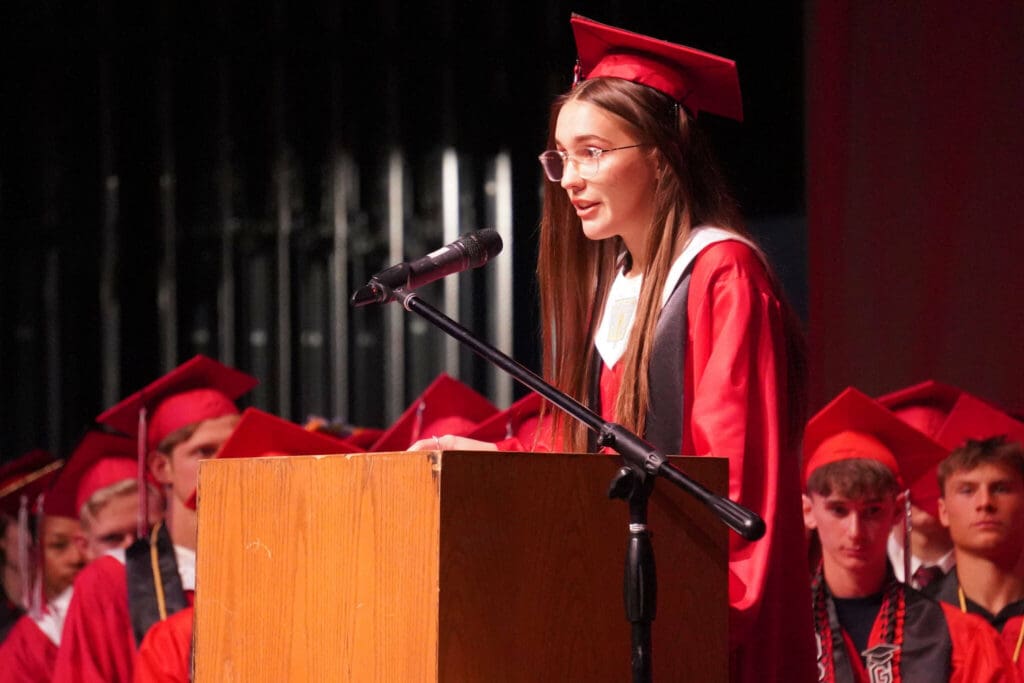
Kenai Peninsula represented by 3 in 2025 Summer of Heroes
The program spotlights Alaska youth driving change in their communities.
The Kenai Peninsula is represented by three of the six young people awarded for their community service by Alaska Communications’ “Summer of Heroes” program.
Grace Kahn and Xiling Tanner, both of Kenai, and Seward’s Lola Swanson, were among six recipients announced Monday.
The Summer of Heroes, according to a release, spotlights Alaska youth who are “tackling real issues like fighting food insecurity, advocating for mental health, expanding access to youth sports and the arts, and creating more inclusive communities.” Each of the awardees will receive a $2,000 scholarship. Summer of Heroes has been marked for 15 years, and this year’s recipients make 94 total who have received scholarships through the program.
“Our young people are driving real change in their communities,” says Paul Fenaroli, president and CEO of Alaska Communications, in the release. “They lead with compassion, courage and creativity. We’re proud to shine a light on their achievements. Congratulations to this year’s honorees. Your actions inspire all of us to serve more boldly.”
A donation of $30,000 will also be directed to the Boys & Girls Clubs of Southcentral Alaska. Alaska Communications donated $15,000, according to the release; supplemented by $5,000 donated by employees of the utility that was matched by both the company and by Fenaroli to reach the total donation.
Kahn, who recently graduated as salutatorian of the Kenai Central High School class of 2025, is recognized for her work in youth sports — as a referee, coach, role model and cheerleader. She also does tutoring and volunteers at the food bank.
Swanson teaches dance in Seward, and is recognized for working to bring arts into Seward classrooms and helping to make dance “financially accessible for all families,” provided information says.
Tanner, who currently serves as the student representative to the Kenai City Council, is recognized for his work to support food access and sustainability through advocacy, mentorship and work with the Kenai Peninsula District 4-H and Kenai Local Food Connection.
Kenai Peninsula Borough Mayor Peter Micciche serves on the judging panel for the Summer of Heroes. During a July 8 meeting of the Kenai Peninsula Borough, he said that the then-announced winners included “high-flyer students” from the local area.
“The Kenai Peninsula Borough did very well,” he said.
Reach reporter Jake Dye at jacob.dye@peninsulaclarion.com.
Rec Sports
YOUTH SECTOR: THE TECHNICAL STAFF FOR THE 2025/26 SEASON
Football is back! Here are the staff members for all the men’s and women’s youth teams of the Rossoneri, who will be in action at the PUMA House of Football: U20 MEN’S PRIMAVERA Official start date: 7 July Advertisement Vito Antonelli (vice manager) Edoardo Caroglio (team coordinator) Luca Castellazzi (goalkeeper coach) Andrea Caronti (fitness coach) Arturo Gerosa (rehabilitation specialist) Marco […]

Football is back! Here are the staff members for all the men’s and women’s youth teams of the Rossoneri, who will be in action at the PUMA House of Football:
U20 MEN’S PRIMAVERA
Official start date: 7 July
Advertisement
-
Vito Antonelli (vice manager)
-
Edoardo Caroglio (team coordinator)
-
Luca Castellazzi (goalkeeper coach)
-
Andrea Caronti (fitness coach)
-
Arturo Gerosa (rehabilitation specialist)
-
Marco Gabrielli (video analyst)
MEN’S U18s
Official start date: 4 August
-
Francesco De Francesco (vice manager)
-
Antonio Asile (goalkeeper coach)
-
Pietro Ladu (fitness coach)

MEN’S U18s
Official start date: 4 August
-
Marco Merlo (vice manager)
-
Luigi Ragno (goalkeeper coach)
-
Maurizio Buriani (fitness coach)
MEN’S U16s
Official start date: 11 August
-
Nicola Matteucci (vice manager)
-
Simone Invernizzi (goalkeeper coach)
-
Antonio Sechi (fitness coach)
MEN’S U15s
Official start date: 11 August
-
Pasquale Desiderio (vice manager)
-
Riccardo Ventrella (goalkeeper coach)
-
Andrea Moscovini (fitness coach)
MEN’S U14 REGIONALS
Official start date: 18 August
-
Alessandro Artusa (manager)
-
Gianluca Manes (vice manager)
-
Alessandro Guzzetti (goalkeeper coach)
-
Andrea Spini (technical assistant)
PRO MEN’S U13 BEGINNERS
Official start date: 23 August
-
Giuseppe Vuono (vice manager)
-
Mirko Pigozzi (goalkeeper coach)
-
Francesco Santoro (fitness coach)
MEN’S U12 BEGINNERS
Official start date: 24 August
-
Mattia Proserpio (manager)
-
Marco Broggi (vice manager)
-
Mirko Pigozzi (goalkeeper coach)
-
Francesco Santoro (fitness coach)
MEN’S U11 BEGINNERS
Official start date: 25 August
-
Andrea Carbonara (manager)
-
Riccardo Pozzi (vice manager)
-
Alessandro Vanini (goalkeeper coach)
-
Elena Vagni (technical assistant)

BOYS’ U10s
Official start date: 26 August
-
Luca Tettamanti (manager)
-
Lino Marzorati (vice manager)
-
Alessandro Vanini (goalkeeper coach)
-
Elena Vagni (technical assistant)
BOYS’ U9s
Official start date: 28 August
-
Andrea Colombo (vice manager)
-
Alessandro Guzzetti (goalkeeper coach)
FIRST STEPS – BOYS’ U8s
Official start date: 29 August
-
Derege Mazzoccato (vice manager)
-
Alessandro Guzzetti (goalkeeper coach)
WOMEN’S PRIMAVERA
Official start date: 22 July
-
Georgia Gatti (technical assistant)
-
Laura Fusetti (team coordinator)
-
Mattia Salvador (fitness coach)
-
Sofia Candela (fitness coach)
-
Filippo Parodi (goalkeeper coach)
WOMEN’S U17s
Official start date: 18 August
Advertisement
-
Ilenia Prati (vice manager)
-
Andrea Sirtori (goalkeeper coach)
-
Matteo Campetti (fitness coach)
WOMEN’S U15s
Official start date: 18 August
-
Roberto Bottiglieri (manager)
-
Angelo Bottiglieri (vice manager)
-
Alberto Maria Valsecchi (goalkeeper coach)
-
Nicolò Bellotti (fitness coach)
WOMEN’S U13s
Official start date: 27 August
-
Sara Condotta (vice manager)
-
Alberto Maria Valsecchi (goalkeeper coach)

WOMEN’S U11s
Official start date: 29 August
-
Alessandro Greco (vice manager)
-
Denis Rota (goalkeeper coach)
WOMEN’S U10s
Official start date: 1 September
-
Matteo Angelo Bergomi (manager)
-
Paolo Benelli (vice manager)
-
Denis Rota (goalkeeper coach)
Base activities
-
Martina Mapelli (fitness coach)
-
Gaia Missaglia (technical assistant)
-
Gianfranco Faillo (observer)
The AC Milan WhatsApp channel is available: follow us!
-

 Fashion2 weeks ago
Fashion2 weeks agoEA Sports College Football 26 review – They got us in the first half, not gonna lie
-

 Health2 weeks ago
Health2 weeks agoCAREGD Trademark Hits the Streets for Mental Health Month
-

 Youtube3 weeks ago
Youtube3 weeks agoWill Giannis DEPART Milwaukee⁉️ + How signing Turner & waiving Dame impacts the Bucks | NBA Today
-

 Sports2 weeks ago
Sports2 weeks agoVolleyball Releases 2025 Schedule – Niagara University Athletics
-

 Sports2 weeks ago
Sports2 weeks agoNew NCAA historical database provides wealth of information on championships
-

 Sports2 weeks ago
Sports2 weeks agoAdapti, Inc. (OTC
-

 College Sports3 weeks ago
College Sports3 weeks agoBuford DB Tyriq Green Commits to Georgia
-

 High School Sports5 days ago
High School Sports5 days ago100 days to men's college basketball
-

 Youtube3 weeks ago
Youtube3 weeks agoThe Twins squeeze out a walk-off win 👀
-

 Rec Sports2 weeks ago
Rec Sports2 weeks agoFlorida woman, 20, accused of pepper-spraying rich men in Miami Beach hotels, stealing their luxury watches


